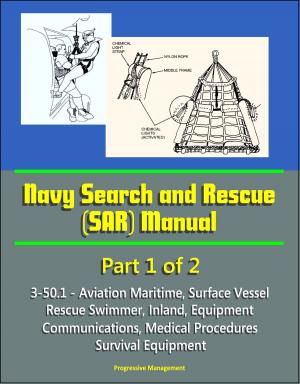Harnessing the Genie: Science and Technology Forecasting for the Air Force - 1944-1986 - von Karman, Woods Hole, Doolittle, Hap Arnold, Stever, Schriever, Forecast Project
Nonfiction, History, Military, Aviation| Author: | Progressive Management | ISBN: | 9781310298240 |
| Publisher: | Progressive Management | Publication: | May 30, 2014 |
| Imprint: | Smashwords Edition | Language: | English |
| Author: | Progressive Management |
| ISBN: | 9781310298240 |
| Publisher: | Progressive Management |
| Publication: | May 30, 2014 |
| Imprint: | Smashwords Edition |
| Language: | English |
Air power has always been closely linked to science and technology. The very reality of flight depended upon a technical innovation. Unlike the other services, where machines merely support the mission, technology is for the Air Force at the very heart of its existence as an institution. As a consequence, the USAF and its predecessor organizations have always recognized the singular importance of science to their survival. This lesson was driven home with new urgency on December 7, 1941. No longer were American borders secure against aerial bombardment. The Japanese proved at Pearl Harbor that U.S. territory was not immune from attack; waves of bombers might strike without warning and with devastating effects. Commanding General of the Army Air Forces Henry H. Arnold countered the threat, at least in part, with brainpower from the universities. Three years later, with victory close at hand, Arnold began to consider the safety of the country once the war was over. The danger of sudden and devastating raids had greatly increased since Pearl Harbor. He turned, as he had during the war, to academia and enlisted the help of Dr. Theodore von Karman, asking him to assemble a group of top scientists to review aeronautical research and make recommendations about the future of air power in light of probable scientific opportunities in the decades to come.
The result is felt in the Air Force yet today, for Toward New Horizons, written by von Karman's USAF Scientific Advisory Group, has endured as the model for Air Force science and technology forecasts. Renamed the USAF Scientific Advisory Board, the institution von Karman created has also endured. Harnessing the Genie tells us that while both the report and the board continue to be regarded with the utmost respect, their roles have been imperceptibly transformed over time. Toward New Horizons was followed in 1957 and 1958 by the Woods Hole Summer Studies, in 1964 by Project Forecast, in 1975 by New Horizons II, and in 1986 by Project Forecast II. But with each report, the likeness to von Karman's model has become more remote. The extent of reliance on independent advice has steadily lessened and greater emphasis placed on internal USAF sources for forecasting the future. As a consequence, the Scientific Advisory Board is no longer involved in long-range, broadly based forecasting envisioned by von Karman, but devotes itself to giving advice on technical subjects. Moreover, no institution has arisen to claim control over the process of forecasting and directing the pace and direction of technological change. Instead, the direction of technological forecasting of long-range research and development has wandered from the National Academy of Sciences to the Air Force Systems Command to the Air Staff, and back again to Systems Command. The reports themselves have changed accordingly. Toward New Horizons, rooted in the basic sciences, stressed the abstract principles of nature and how they related to air-power advancements. As their participants have gradually become more closely associated with the Air Force, the subsequent studies have become more technological than scientific, reflecting a declining representation of independent scientists on the succeeding panels.
Thus, Harnessing the Genie describes and analyzes the methodologies and conclusions of the five main science and technology forecasts undertaken by the Air Force since before its birth as an independent service. Hopefully, this work will provide useful background as the Air Force grapples with the technological demands of national security in the 21st century.
Harnessing the Genie: Science and Technology Forecasting for the Air Force - 1944-1986 * Introduction * Chapter I - A Mandate for Civilian Science, 1944-1950 * Chapter II - The Decline of Civilian Science, 1950-1958 * Chapter III - Conforming Science to Military Necessity, 1956-1966 * Chapter IV - Scientists in Uniform, 1966-1986 * Conclusion
Air power has always been closely linked to science and technology. The very reality of flight depended upon a technical innovation. Unlike the other services, where machines merely support the mission, technology is for the Air Force at the very heart of its existence as an institution. As a consequence, the USAF and its predecessor organizations have always recognized the singular importance of science to their survival. This lesson was driven home with new urgency on December 7, 1941. No longer were American borders secure against aerial bombardment. The Japanese proved at Pearl Harbor that U.S. territory was not immune from attack; waves of bombers might strike without warning and with devastating effects. Commanding General of the Army Air Forces Henry H. Arnold countered the threat, at least in part, with brainpower from the universities. Three years later, with victory close at hand, Arnold began to consider the safety of the country once the war was over. The danger of sudden and devastating raids had greatly increased since Pearl Harbor. He turned, as he had during the war, to academia and enlisted the help of Dr. Theodore von Karman, asking him to assemble a group of top scientists to review aeronautical research and make recommendations about the future of air power in light of probable scientific opportunities in the decades to come.
The result is felt in the Air Force yet today, for Toward New Horizons, written by von Karman's USAF Scientific Advisory Group, has endured as the model for Air Force science and technology forecasts. Renamed the USAF Scientific Advisory Board, the institution von Karman created has also endured. Harnessing the Genie tells us that while both the report and the board continue to be regarded with the utmost respect, their roles have been imperceptibly transformed over time. Toward New Horizons was followed in 1957 and 1958 by the Woods Hole Summer Studies, in 1964 by Project Forecast, in 1975 by New Horizons II, and in 1986 by Project Forecast II. But with each report, the likeness to von Karman's model has become more remote. The extent of reliance on independent advice has steadily lessened and greater emphasis placed on internal USAF sources for forecasting the future. As a consequence, the Scientific Advisory Board is no longer involved in long-range, broadly based forecasting envisioned by von Karman, but devotes itself to giving advice on technical subjects. Moreover, no institution has arisen to claim control over the process of forecasting and directing the pace and direction of technological change. Instead, the direction of technological forecasting of long-range research and development has wandered from the National Academy of Sciences to the Air Force Systems Command to the Air Staff, and back again to Systems Command. The reports themselves have changed accordingly. Toward New Horizons, rooted in the basic sciences, stressed the abstract principles of nature and how they related to air-power advancements. As their participants have gradually become more closely associated with the Air Force, the subsequent studies have become more technological than scientific, reflecting a declining representation of independent scientists on the succeeding panels.
Thus, Harnessing the Genie describes and analyzes the methodologies and conclusions of the five main science and technology forecasts undertaken by the Air Force since before its birth as an independent service. Hopefully, this work will provide useful background as the Air Force grapples with the technological demands of national security in the 21st century.
Harnessing the Genie: Science and Technology Forecasting for the Air Force - 1944-1986 * Introduction * Chapter I - A Mandate for Civilian Science, 1944-1950 * Chapter II - The Decline of Civilian Science, 1950-1958 * Chapter III - Conforming Science to Military Necessity, 1956-1966 * Chapter IV - Scientists in Uniform, 1966-1986 * Conclusion















